|
Art & Entertainment Highlights for November 26
Sixty antiques donated to museum for Heritage Day
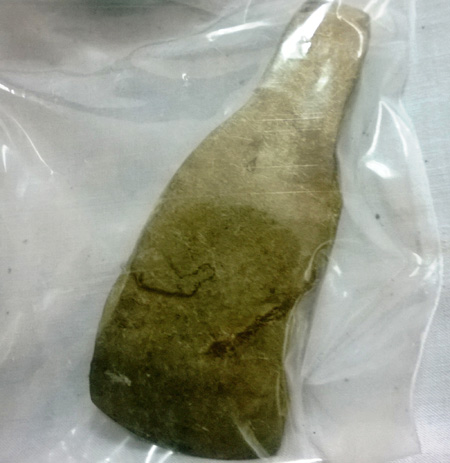
As many as 60 antiquities, dating from the 14th through 19th centuries, were donated to the central city's museum following a donation programme to mark Viet Nam's Heritage Day yesterday.
The items, all from private collections, include stone, bronze jars, tools, and belongings of Vietnamese soldiers from the American War.
The oldest antiquities were two stone hoes dating from 4,500-3,500 years ago.
In Quang Nam Province, over 1,500 antiquities were donated to the province's museum.
According to director of the museum, Nguyen Nay, the UNESCO Viet Nam's Centre for research and conservation of antiquities offered 184 artifacts from the Dong Son culture and collections from the dynasties of Dinh, Le, Ly and Tran.
Also, representatives from Doan Anh Duong company donated 1,400 objects of Chu Dau ceramics, which were excavated from a shipwreck near Cham Island off the coast of Hoi An City.
Hue showcases free retrospectives
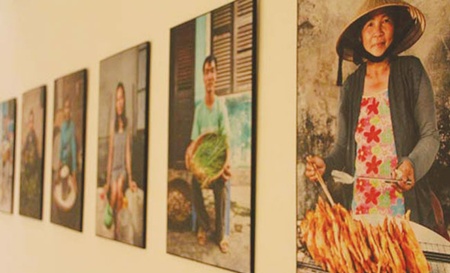
Hue opens two exhibitions that offer free entrance to visitors, showing photos of a German artist and memorials from friends of a Vietnamese well-known late song composer Trinh Cong Son.
The New Space Arts Foundation at 15 Le Loi in the city is showing photos taken around Hue by German artist Astrid Schulz, featuring ‘Made in Vietnam'.
The exhibition shows collection of Vietnamese foods that Schulz captured in her photos. It also features portraits of people who produce the foods, including fishermen, livestock keepers or farmers cultivating fruits or vegetable.
"We often forget how labour intensive it is to produce what we eat. Especially in the Western world the connection between food and nature seems to get lost," said Schulz, aiming at reminding the origin of food provisions and people who are working in food production such as small scale farming, fishing and producing of local delicacies.
The exhibition is open until the end of this month.
At another place, friends and fans of late song composer Trinh Cong Son, who was originally a native of Hue, gather at the Gac Trinh, which is an apartment the composer used to live in 1960s.
At the exhibition, artist Dinh Cuong shows his oil paintings that features moments with the late composer for memories of fans. The late composer has millions of fans around the country.
The exhibition has 18 paintings by Dinh Cuong and eight others by artist Phan Ngoc Minh from Da Nang, featuring topics on Son and memories of Hue.
Some Son's friends brought things including letters, photos and a jacket.
Closing date for the exhibition was not announced. The exhibition can be found at 230/19 Nguyen Truong To in Hue.
Watch station restored in ancient Hue citadel
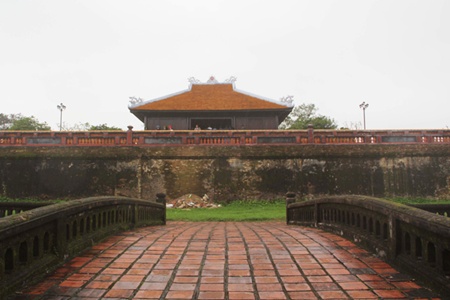
A watch station that was originally built by the first king of the Nguyen dynasty (1802-45) in the royal palace in Hue has been restored.
Two years after forming the dynasty, King Gia Long built four military watch stations on top of the palace's fencing walls to the east, west, south, and north, naming the
watch stations, respectively, Dong Khuyet Dai, Tay Khuyet Dai, Nam Khuyet Dai and Bac Khuyet Dai.
Yesterday, the Hue Monuments Complex Centre announced the successful restoration of the Dong Khuyet Dai at a cost of VND11billion (US$523,000), funded by the centre's budget.
The construction included a wooden building in the centre, small gardens at two sides, a brick yard and walls, and two stairs leading to the watch station, resembling what used to exist on the site.
Of note, researchers have failed to learn why the dynasty kings preferred Dong Khuyet Dai and spent many times more for restorations, compared to the three other watch stations.
The centre's managers have said they expect to have a complete system of the royal palace restored, with the station being one of the renovated sites.
The restored watch station is expected to lure more visitors to the site, as it offers views of the adjacent royal gardens, Vuon Co Ha, and Hien Nhon Gate, which leads visitors from the palace to the nearby Museum of Royal Artifacts.
According to the centre's director, the completion of the restoration is to meant to coincide with the celebration of Viet Nam's Heritage Day on November 22.
Nhi Khe Village festival honours wood-carving ancestors
Nhi Khe Village in Thuong Tin District's Nhi Khe Commune in Ha Noi, famous for its wood lathing craft for hundreds of years, will organise the annual Nhi Khe Village Festival on November 27.
The festival worships the forefather of the wood carving craft, Doan Tai, who taught villagers the wood lathing craft in the 16th century.
The event is organised on Tai's death anniversary on 25th day of the lunar tenth month every year. Many lath turners from neighbouring provinces will also attend the festival.
Worshipping ceremonies and other activities, including chess and singing cheo (traditional opera), will be organised at the festival.
Visitors can enjoy the village's exquisite products, including worship objects, household furniture and utensils, beads and various kinds of statues. The products are made from various materials, including wood, bone and horn.
Da Nang Museum presented over 70 precious objects
The Da Nang Museum has been presented with more than 70 objects, documents and photos reflecting the central city’s history and culture, courtesy of organisations, individuals, researchers and collectors nationwide.
The precious exhibits are expected to contribute to historical research, while improving collections and enriching exhibition activities in the museum, thus educating future generations to preserve and uphold historical heritage from the locality.
At present, the museum is displaying more than 2,500 exhibits on an area of 3,000 sq.m, focusing on the themes such as the natural and social history of Da Nang city; the history of revolutionary struggle; evidence of US army destruction in Da Nang and the cultural identities of ethnic groups in Da Nang and Quang Nam province.
As part of the activities to welcome Vietnam Cultural Heritage Day (November 23), the museum also kicked off an exhibition of paintings chosen from collector Nguyen Ba Lan’s collection.
On show are works by famous Vietnamese painters such as Luong Xuan Nhi, Nguyen Duc Nung, Cao Ba Minh and Tran Van Tho.
On the same day, the Department of Culture, Sports and Tourism of Quang Nam province also received hundreds of precious antiques, including 43 artifacts from the Dong Son Culture - a bronze age culture from about 1000 to 1 BC - and many found in shipwrecks in Quang Nam province’s territorial waters recently.
Vietnam-Japan theater cooperation in motion
Twenty-five theater experts mainly from the Vietnam Youth Theatre arrived in Tokyo, Japan, on November 21 in a new programme to strengthening the ties and cultural cooperation between Japan and ASEAN countries, reported the CPV online newspaper.
Launched by the Japan Foundation, this programme offers a good chance for experts to visit theatres (the National theatre of Japan, Tokyo Metropolitan, Sai-no-kuni Saitama...), art centres (Shizuoka, Kitakyusyu...) and concert halls as well as exchange ideas on theatre management, creation of stage performances with Japanese counterparts from the north to the south of Japan.
The Vietnamese theatre experts will also witness as many stage performances as possible, ranging from Kabuki performance to musicals and contemporary stages. They will come back to Vietnam on December 5.
After their first visit to Japan, selected technical staffs as well as actors/dancers will travel to Japan again sometime from March 2014 to take a long-term training course in Japanese professional theater companies, followed by co-production of stage performance which will be also shown in Vietnam later.-
Award-winning gender equality posters, family logos exhibited
Outstanding designs for gender equality posters and logos on family issues that won prizes in two recent contests are on display at the Vietnamese Women’s Museum from November 22-26.
The winning entries include 54 informational posters on gender equality and 20 family logos calling for gender equality and happy, prosperous and civilised families.
The exhibition aims to encourage practical actions to promote gender equality and to contribute to maintaining and developing prosperous families and communities.
Deputy Minister of Labour, Invalids and Social Affairs Nguyen Thanh Hoa, who is also vice president of the National Commission for the Advancement of Women, addressed the exhibition’s opening ceremony, stressing that ensuring equality, stability and the healthy development of families is an important factor in the maintenance and sustainable development of the society.
The exhibition is significant for what it communicates about gender equality and family work in Vietnam and for its contribution to the elimination of violence against women and girls, said Deputy Minister Hoa.
At the ceremony, the organising board presented one first prize, two second prizes and three third prizes to outstanding informational posters on gender equality, while one first prize winner and two runners-up received awards for the best logos on family subjects.
The awarded works were selected from 236 poster entries by 120 artists and 252 logos by 73 artists from across the country.
Phu Day festival recognised as national intangible cultural heritage
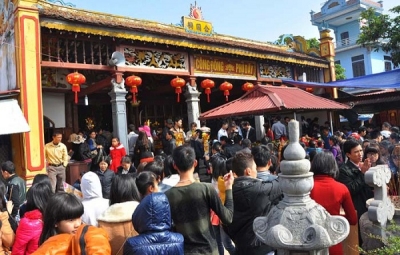
The Nam Dinh provincial People’s Committee held a ceremony on November 22 to receive the Ministry of Culture, Sports and Tourism’s certificate recognising the Phu Day festival as National Intangible Cultural Heritage.
The festival is held annually at the Phu Day historical and cultural relics site in Kim Thai commune, Vu Ban district to honour Mother Goddess Lieu Hanh, one of the four immortals in Vietnamese folklore. It reflects the local people's desire for a better life.
Traditional rituals, including incense offerings and torchlight palanquin processions, are held during the Phu Day festival, along with a wide variety of cultural activities and traditional folk games.
A Chau Van (spiritual) singing ritual is the highlight of the festival. Nam Dinh province is currently at work on a dossier on Chau van (Spiritual) singing for submission to UNESCO for recognition as Intangible Cultural Heritage of Humanity.
The recognition of the Phu Day festival as national intangible cultural heritage contributes to preserving and promoting the historical and cultural values of Phu Day relics and the Vietnamese Mother Goddess worship culture.
The event also aims to raise awareness among local departments and branches of proper management of the province’s cultural heritage.
2014 United Nations Day of Vesak to receive 10,000 participants
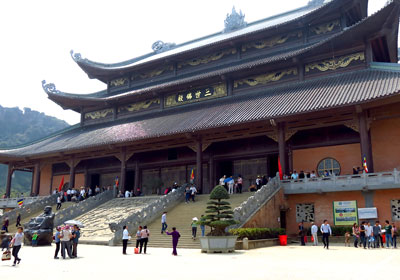
The 2014 United Nations Day of Vesak (Buddha's Birthday, Enlightenment and Passing Away) will be held at Bai Dinh Pagoda in the northern province of Ninh Binh from May 7-11, 2014, announced the Vietnam Buddhist Sangha in Hanoi.
Most Venerable Thich Thanh Nhieu, standing Vice Chairman of the Vietnam Buddhist Sangha, said that the 2014 United Nations Day of Vesak will be hosted by the Vietnam Buddhist Sangha in collaboration with the International Council for the Day of Vesak.
The international Buddhism conference will also take place during the event.
This is the second time that Vietnam will host the United Nations Day of Vesak after the 5th United Nations Day of Vesak which was organized for the first time in Hanoi in 2008.
The event is a valuable opportunity for Buddhist communities to propagate Buddha’s message of mercy and peace throughout the world.
The United Nations Day of Vesak is expected to attract about 10,000 participants, including 1,500 international guests from some 100 countries and territories worldwide and 8,500 local Buddhists and visitors.
The event themed ‘Buddhist Perspective towards Achieving the United Nations Millennium Development Goals’ will include seminars on Buddhists response to sustainable development and social change; global warming and environmental protection; healthy living; peace-building and post-conflict recovery; Buddhist education and university level curriculum.
Toyota Scholarships granted to young music talents
85 Toyota Scholarships worth VND340 million were granted to young Vietnamese music students in Ho Chi Minh City on November 21.
The deserving students were from the Vietnam National Academy of Music, Hue Academy of Music, Ho Chi Minh City Conservatory of Music, Tay Bac Culture and Arts
Launched in 2009, ‘Toyota Scholarships for Vietnamese Young Music Talents’ aims to encourage music students who won local and international music awards and have disadvantaged situations; and ethnic minority music students.
The fund has been offered to 475 scholarships since its establishment. The entire ticket proceeds of the Toyota concerts have been used for this meaningful scholarship program.
Toyota Concert Tour 2013 took place at the Ho Chi Minh City Opera House on July 30 and at Hanoi Opera House on August 2-3 celebrating Japan-Vietnam Friendship Year and 40 years of diplomatic relations between the two countries.
The concert presented to music lovers various delicate melodies of Japan, Vietnam and the world including two works of Russian romanticism composer Tchaikovsky, the joyful ‘Music for Symphony Orchestra’ of Japanese conductor-composer Yasushi Akutagawa, and ‘Xe chi luon kim’ (a duet love folk song of the northern province of Bac Ninh) by composer Tran Manh Hung.
The classic music works were performed by VNSO, under the baton of Japanese maestro Honna Tetsuji. Young talented violinist Do Phuong Nhi, 15, was Guest of Honor at the concert.
Folk tug of war seeks UNESCO recognition
Deputy PM Vu Duc Dam has directed relevant agencies to join in compiling a multi-national dossier of the traditional Tug of war to seek the UNESCO's recognition as an Intangible Cultural Heritage of humanity by 2015.
Accordingly, the Ministry of Culture, Sports and Tourism was assigned to work with relevant ministries and agencies and the Republic of Korea and other nations in Asia to work on the multinational dossier.
Tug of war is a special cultural heritage and a social game played across the country. It often appears in traditional rituals and festive events.
The activity, which honors the power of unity, has been practiced by not only Kinh people, the majority ethnic group in Viet Nam, but by many other minor ethnic minority groups in the country for generations.
The cooperation in establishing the multinational dossier will create a chance for Viet Nam to strengthen regional and international integration, advertise cultural heritage and Vietnamese nation and people.
Vietnamese television films lure a large audience
A new genre of Vietnamese films has appeared on local television channels with very romantic titles, hoping to attract audiences.
These kind of films are often broadcast on the channels VTV1 and VTV3 during prime time (ranging from 8:00 to 10:00 p.m).
After the broadcast of a much-criticised TV film entitled ““Anh chang vuot thoi gian” (Man who passes through time) was suspended, producers have been put in place to pay more attention to the quality of Vietnamese television films, particularly to those which are shown during prime time.
The typical features of these films are a cast of young actors and actresses along with complicated romantic plots.
Recently, Director Khai Anh launched a film called “Hoa no trai mua” (When the flowers do not bloom) which includes many young, famous actors and actresses, attracting the attention of young audiences.
Based on this trend, many young actors and actresses have returned to the TV. One such actor, Viet Anh, has appeared in many TV films such as “Tinh yeu khong hen truoc” (Love is blind) and “Chi co the la tinh yeu” (Love is uncertain).
At one time, prime time television in Vietnam was dominated by foreign content. However, in recent years, the domination of foreign films have on the fall, giving the floor to Vietnamese films. Today, Vietnamese films account for nearly 50% of films shown on television, particularly on Vietnamese channels VTV1 and VTV3 channels.
Many critics have complained that made-for-TV films attract audiences but have monotonous plots and lack socially relevant content, mainly sticking to light comedy and romance. They also say that a reliance on the participation of stars and models along with what many call bad performance has affected the quality of these films.
Culture of Vietnam’s ethnic groups honoured
The diverse culture of Vietnam ’s ethnic groups was spotlighted at a festival which took place in Hanoi from November 18-24.
Nearly 400 artists and villagers from 16 ethnic groups across the country brought their cultural identities to the festival “the National Great Solidarity - Vietnamese Cultural Heritage Week” at the Culture-Tourism Village of Dong Mo in Son Tay town.
The festival not only offered a chance for people from different ethnic groups to meet and join cultural activities but also became a bridge to connect them together.
“I feel glad as I can meet many people at the event. I will introduce our gong culture to them,” said Ma Don from Dak Lak province.
During the week-long festival, a unique market, or the kermis, of the northern mountainous region was set up to help visitors understand that it is not only a place to exchange goods but also a chance for locals, particularly those living in remote areas, to meet.
The Mong ethnic people from the region introduced how to weave brocade items to visitors. Meanwhile, Arieu Ping, the biggest festival of the Pako ethnic minority group in
the central region to pay tribute to the deceased, was also held.
Visitors were also attracted by the well-known floating market of the people in the south.
“It is the first time I have seen the floating market of Can Tho city,” said Nguyen Thi Ha, a student. “I find it unique and interesting.”
The National Great Solidarity - Vietnamese Cultural Heritage Week aims to honour the cultural values of the Vietnamese ethnic groups, and helps strengthen the national unity, which plays a crucial role in national construction, protection and development.-
Nam Dinh festival, singing - intangible heritage
The northern province of Nam Dinh has held a ceremony to receive certificates officially recognising its Phu Day festival and Chau Van (spiritual singing) ritual as pieces of National Intangible Cultural Heritage.
Both are closely linked with Goddess Lieu Hanh, who is worshipped in the Mother Goddess religion and one of the Four Immortals in Vietnamese legends.
The festival, the biggest among numerous activities celebrating Goddess Lieu Hanh in the country, is held annually at the Phu Day historical and cultural relic site in Kim Thai commune, Vu Ban district - considered the spiritual centre of the Mother Goddess religion.
The site is also the cradle of “hau bong”, an age-old spiritual ritual of the Kinh ethnic group, and Chau Van singing, which is indispensable in the worshipping practice of the Mother Goddess religion.
Chau Van was created during the Tran Dynasty (1225-1400) and Nam Dinh province is considered its birthplace.
The highly rhythmic and trance-oriented form of singing often takes place during rituals to honour the Mother Goddesses and connect to other gods. It is performed mostly at temples and pagodas.
The music and poetry performed in the folk art are mingled with a variety of rhythms, pauses, tempos, stresses and pitches. The genre has also adopted folk songs from the highlands of the north, centre and south.
The latest recognition helps preserve and promote the historical and cultural values of the heritage and will help the province as it tries to persuade the Prime Minister to
recognise Phu Day as a national special relics site and UNESCO to acknowledge the Chau Van ritual as a piece of intangible cultural heritage of humanity.
Source: SGT/SGGP/VNA/VNS/VOV/Nhandan
|
Thứ Hai, 25 tháng 11, 2013
Đăng ký:
Đăng Nhận xét (Atom)
Không có nhận xét nào:
Đăng nhận xét